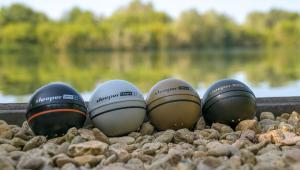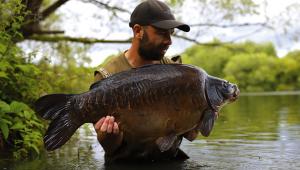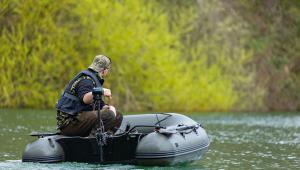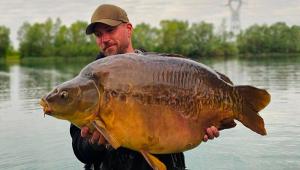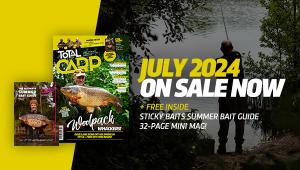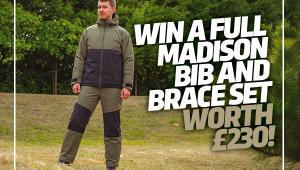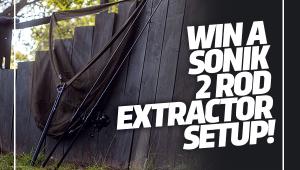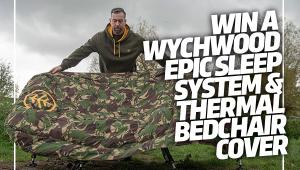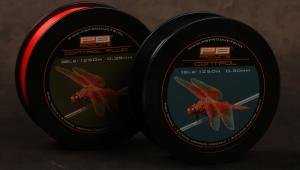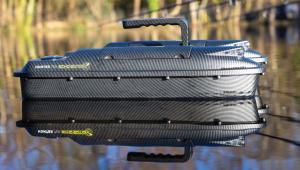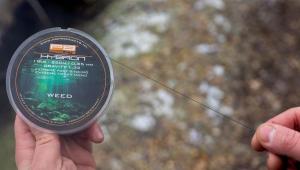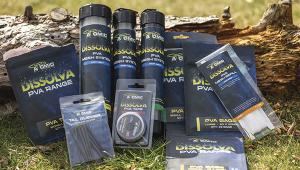ICONS | Shoulders

One does wonder where carp fishing would be without our historically important waters that were once home to some of the most sought after fish in Britain. The rise of specimen carp fishing has certainly inspired many to begin their own adventure and chase their dreams. Fisheries have been created, companies have been born and marriages have ended thanks to the love of the pursuit and the uncertainty of carp fishing itself.
If you have never dedicated all of your spare time chasing once particular fish you may never understand the obsession, dedication and sacrifice required to see that one chosen carp in the album. It is often not an easy ride but the culmination of events that build up to a specific capture creates memories that will last for a lifetime. The 1970s, 1980s and 1990s are a select period in carp fishing that saw a sharp rise in the size of carp being caught and a significant increase in numbers too. While this area of angling was largely deemed a waste of time by the wider population in its infancy, we currently see a worldwide interest in fishing for this favoured species of cyprinid.
Lakes of all shapes and sizes were formed following the completion of gravel extraction in the first half of the 20th century surrounding Heathrow Airport, which was opened for commercial travel in 1946. Lakes that are very much an iconic staple within carp fishing such as Wraysbury, Yeoveney and Longfield to name just a few, would have been stocked with bream, carp, perch, pike and pike and tench in the 1950s and 1960s. Gravel companies began leasing lakes to angling clubs and it didn’t take long at all for these venues to show their true potential.
The first recorded capture of Shoulders was in 1971.
A stocking of approximately 100 carp was introduced into Yeoveney in the 1960s and it was also believed that a Polish individual may have been involved in stocking additional fish into local waters. It is at Yeoveney where the very first documented capture of the iconic Shoulders can be traced back to the hands of John Carver in 1971. Weighing 17lb, this mirror carp was still very much regarded as a specimen fish. Little did anybody know, John included, that this fish would become highly sought in its later life. The journey Shoulders took over the years, combined with its unique characteristics, make it one of the greatest carp of all time.
Although it is not known how long the great fish inhabited Yeoveney, Shoulders, along with the current residents of the lake were to be removed in 1979 to make way for development of the M25. The remains of the lake can now be found separated by Junction 13. Once the news had reached the ears of many, it was the efforts of the anglers that saw the resident fish being moved into both Longfield and Wraysbury. The process was not an easy one as there were very few involved and those who were had poor equipment to use. Without this operation however, the future of British carp fishing would have been very different indeed and fortunately for us all it was a resounding success.
Kenny Hodder was another who banked the great fish from Yeoveney.
Another notable carp that lived in Yeoveney was a fish called the Parrot, which followed the same journey as Shoulders into the next millennium. The Parrot was originally transferred from a local water known as Moor Lane and into Yeoveney, where Colin Claydon was the first known capture of this fish in the early 1960s.
Being such robust creatures, many of the fish that were moved survived and continued to flourish in their new homes. Only the following year after being introduced into Longfield, one of the former Yeoveney fish became Longfield’s first 40lb carp. Colin Swaden was the captor and it was believed to also be the first carp in Britain landed on the newly invented hair rig. Longfield already had an established stock of carp before the Yeoveney inductees had arrived but the additions were certainly welcome as at times Longfield could be an extremely testing venue. Sometimes for months at a time bobbins would sit motionless and even accomplished anglers such as Ritchie McDonald found the going tough initially. Although in 1981 Ritchie had a bumper year and caught several large Longfield fish breaking 30lb, including the lake’s biggest and on this occasion the scales raced to 38lb 14oz. Among his season’s worth of catches was Shoulders weighing 26lb, which was 9lb up from its 1971 Yeoveney capture. In the mid 1980s several Longfield carp were lost to a fish kill, including the lake record mirror.
Ritchie's most successful year at Longfield consisted of a unique 26lb mirror.
Shoulders, along with The Parrot, Big Scale, The Koi, Heart Tail and The Lady were among the bigger fish in the lake that survived. The remaining residents bounced back and in 1987 the second forty to have ever been caught from the lake was netted by Jonny Allen. It was from then on Jack the Net Ripper became widely recognised not only for its size but also for Jonny’s memorable net incident. Chris Ball was to have his meeting with Shoulders, which was tempted by a floater in 1988. At this point in time Shoulders was now firmly on many an angler’s radar, especially once it broke the 30lb mark.
Shortly after the famous record brace was caught by Steve Allcott in 1989 with a magnificent December duo, fishing at Longfield was ceased. The pair of fish weighed 44lb and 37lb respectively, although the reason behind the closure was unclear with numerous reasons being given to the anglers. The strongest rumour had involved backfilling of both Fox Pool and Road Lake, and with that the movement of the Longfield fish was a top priority.
Vic Gillings followed Shoulders from Longfield to Horton.
Horton Church Lake was the body of water that was chosen to receive the former Longfield residents, a total of 57. Before the carp were introduced Horton had been previously been open as a pike and trout water. Dug in the 1960s this deep, rich water was originally used for the housing of trout pens for rearing trout, which goes to prove just how excellent the water quality was and still is. In 1990 the Longfield carp were to experience for themselves just how rich and weedy Horton was.
The vast majority of anglers were understandably a little hesitant fishing for the Longfield carp now living in the Church Lake, although the history and notoriety behind each fish meant the pride of many was soon swallowed. Parting with £400 secured spots for the first season’s fishing with the likes of Dave Lane, Keith Jenkins, Phil Thompson, Reg Bampton and Martin Gardener joining the 50-man syndicate. By now anglers were very familiar with the stock of fish, although one of the fan favourites was Shoulders himself. Having been netted out of Longfield and weighing 34lb 6oz, Shoulders was the fourth largest fish in the lake with the Jack being retaining top dog status at 42lb exactly.
Paul Radford was fortunate enough to catch the sought after specimen twice!
Opportunistic angling caught Ian Russell the very carp that everybody wanted.
Ever since its initial capture in the early 1970s Shoulders had maintained its charismatic features and body shape with every pound it gained. The naming of this sparsely scaled, scarred and wrinkly mirror carp was easy due to its impressive set of shoulders, which made its head appear to be far too small for its body. Similar to that of a bodybuilder and perhaps an odd looking fish for some this fish was the reason why former Longfield members joined Horton that first year and for many years to come.
Respected specimen hunter Vic Gillings was one such member. Vic’s achievements in carp fishing certainly commanded respect with one of his standout lifetime captures being Lucky from Ashlea Pool in 1979. It was the third largest reported carp that year with a recorded weight of 37lb 12oz. At Horton Vic was to finally realise his dreams by catching Shoulders after trying his utmost to do so at Longfield. Ritchie McDonald also joined Horton to catch the last of his most wanted in the shape of The Lady, the same glorious fish Carol Preston landed from Longfield in 1965 at 15lb. Ritchie caught the enigmatic creature from a swim now known as the Salt Circle.
The summer of 1999 saw Garth Ethelston net the historic Shoulders.
The ultimate Church Lake prize was landed by Matt Eaton in September 2002.
Shoulders also had a swim named after itself and we have Keith Jenkins to thank with his capture of one of Britain’s most iconic carp during the first season. Keith surpassed his previous personal best of 26lb by a huge margin, so much so that his Avon scales bottomed out! With the aid of a fellow member’s scales, a weight of 38lb 1oz was recorded and the rest as they say is history. Sadly in 1997 Horton suffered a fish kill of its own, which saw the downfall of several residents including that of Jack the Net Ripper. Ian Chillcott had only caught the great fish the year previous off the surface at a monstrous 49lb 4oz, where it was believed to be one of, if not the largest carp to have been caught off the top in the 20th century. Once more Shoulders had survived against all the odds, together with another former Yeoveney resident in the shape of The Parrot.
Shoulders continued to reign as king of the lake at Horton for another 13 years until in 2010 this grand old fish passed. It was estimated that Shoulders was between 45 and 50 years of age and he managed to reach a top weight of 45lb 13oz. Against all odds this incredible specimen became the obsession for many over the decades, the most wanted and rightly so.
- Log in or register to post comments
